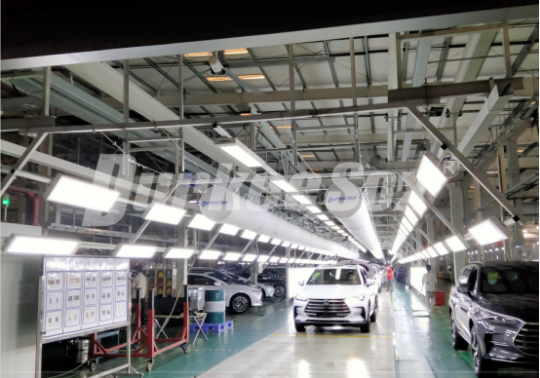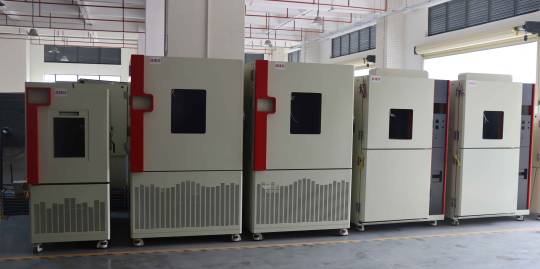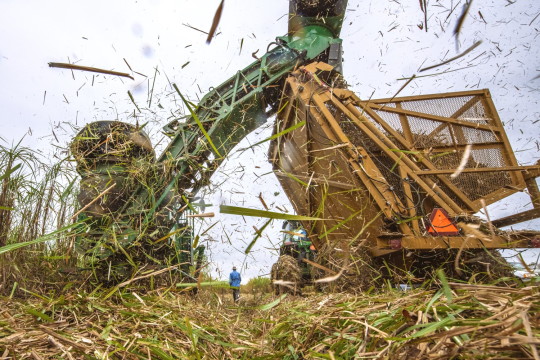#Automotive Thermal System Market
Explore tagged Tumblr posts
Text
Automotive Thermal System Market Size, Growth, Trends and Opportunity 2024-2032

IMARC Group's report titled "Automotive Thermal System Market Report by Component (Compressor, HVAC, Powertrain Cooling, Fluid Transport), Vehicle Type (Passenger Cars, Light Commercial Vehicles, Heavy Commercial Vehicles, and Others), and Region 2024-2032", The global automotive thermal system market size reached US$ 37.0 Billion in 2023. Looking forward, IMARC Group expects the market to reach US$ 51.3 Billion by 2032, exhibiting a growth rate (CAGR) of 3.6% during 2024-2032.
For an in-depth analysis, you can refer sample copy of the report: https://www.imarcgroup.com/automotive-thermal-system-market/requestsample
Factors Affecting the Growth of the Automotive Thermal System Industry:
Stringent Environmental Regulations:
Governing agencies of various countries are implementing stringent environmental regulations to combat climate change and reduce air pollution, which is contributing to the growth of the market. These initiatives encourage automakers to meet these standards to maintain environmental sustainability. Automotive thermal systems help optimize engine performance, minimize emissions, and ensure compliance with regulatory requirements. The rising adoption of advanced thermal management solutions that manage heat dissipation and engine temperature is bolstering the market growth. Furthermore, there is an increase in the demand for cleaner and greener transportation among individuals.
Rising Demand for Electric Vehicles (EVs):
The escalating demand for automotive thermal systems on account of the increasing adoption of EVs among the masses around the world is propelling the growth of the market. EVs require advanced thermal management solutions to regulate battery temperature, ensuring optimal performance, longevity, and safety. Besides this, governing authorities of numerous countries are providing various incentives for the purchase of EVs, which is bolstering the market growth. Furthermore, the rising demand for automotive thermal systems that are tailored as per electric powertrains is supporting the market growth.
Technological Advancements:
Innovations in the automotive thermal management systems assist in enhancing efficiency, performance, and reliability, which is impelling the market growth. Advancements, such as advanced heating, ventilation, and air conditioning (HVAC) systems, lightweight materials, and intelligent heat exchangers are strengthening the market growth. These technological developments enable automakers to meet the evolving expectations of individuals for comfort, convenience, and sustainability while complying with regulatory requirements. Furthermore, key players are focusing on improving thermal efficiency, reducing energy consumption, and integrating smart features into automotive thermal systems for a safer and eco-friendly approach.
Leading Companies Operating in the Global Automotive Thermal System Industry:
Borgwarner Inc.
Continental Aktiengesellschaft
DENSO Corporation
General Motors Company
Gentherm Incorporated
Grayson Automotive Services Limited
Lennox International Inc.
MAHLE GmbH
Modine Manufacturing Company Inc.
Visteon Corporation
Automotive Thermal System Market Report Segmentation:
By Component:
Compressor
HVAC
Powertrain Cooling
Fluid Transport
Compressor represents the largest segment as it plays a pivotal role in managing the temperature and comfort of the interior environment of a vehicle.
By Vehicle Type:
Passenger Cars
Light Commercial Vehicles
Heavy Commercial Vehicles
Others
Passenger cars hold the biggest market share due to the rising focus on maintaining the optimal performance of an engine.
Regional Insights:
North America (United States, Canada)
Asia Pacific (China, Japan, India, South Korea, Australia, Indonesia, Others)
Europe (Germany, France, United Kingdom, Italy, Spain, Russia, Others)
Latin America (Brazil, Mexico, Others)
Middle East and Africa
Asia Pacific enjoys a leading position in the automotive thermal system market on account of the presence of key manufacturers.
Global Automotive Thermal System Market Trends:
The growing demand for automotive thermal systems due to the increasing production of vehicles across the globe is offering a positive market outlook. There is a rise in the need for efficient cooling and heating solutions to maintain optimal operating conditions. Automotive thermal systems play a vital role in ensuring engine reliability, passenger comfort, and overall vehicle performance. The rising demand for vehicles on account of rapid urbanization is impelling the market growth.
Apart from this, manufacturers are prioritizing fuel efficiency to meet regulatory requirements. Automotive thermal systems play a crucial role in achieving optimal fuel economy by managing engine temperature and reducing energy consumption.
Note: If you need specific information that is not currently within the scope of the report, we will provide it to you as a part of the customization.
About Us:
IMARC Group is a leading market research company that offers management strategy and market research worldwide. We partner with clients in all sectors and regions to identify their highest-value opportunities, address their most critical challenges, and transform their businesses.
IMARCs information products include major market, scientific, economic and technological developments for business leaders in pharmaceutical, industrial, and high technology organizations. Market forecasts and industry analysis for biotechnology, advanced materials, pharmaceuticals, food and beverage, travel and tourism, nanotechnology and novel processing methods are at the top of the companys expertise.
Our offerings include comprehensive market intelligence in the form of research reports, production cost reports, feasibility studies, and consulting services. Our team, which includes experienced researchers and analysts from various industries, is dedicated to providing high-quality data and insights to our clientele, ranging from small and medium businesses to Fortune 1000 corporations.
Contact US
IMARC Group
134 N 4th St. Brooklyn, NY 11249, USA
Email: [email protected]
Tel No:(D) +91 120 433 0800
United States: +1-631-791-1145 | United Kingdom: +44-753-713-2163
0 notes
Text
Global Automotive Thermal System Market — Industry Analysis, Size, Share, Growth, Trends, and Forecast 2021–2027

The automotive thermal system is a critical component of any vehicle, as it helps to maintain the temperature of the engine, transmission, and other components within a safe range. This is essential for ensuring the vehicle's performance, reliability, and fuel efficiency.
The global automotive thermal system market is expected to grow significantly in the coming years, driven by a number of factors, including the increasing demand for passenger comfort, the growing popularity of electric vehicles, and stringent emission regulations.
Get a free sample copy of the research report: https://www.vynzresearch.com/automotive-transportation/automotive-thermal-system-market/request-sample
Market Drivers
Increasing demand for passenger comfort: The automotive thermal system plays a vital role in maintaining the temperature of the cabin in a vehicle, which is essential for passenger comfort. As the demand for passenger comfort continues to grow, so too will the demand for advanced automotive thermal systems.
The growing popularity of electric vehicles: Electric vehicles generate less heat than traditional internal combustion engine vehicles, which means that they require a different type of thermal management system. This has created a new market opportunity for automotive thermal system manufacturers.
Stringent emission regulations: Governments around the world are increasingly imposing strict emission regulations on vehicles. This has led to the development of more efficient automotive thermal systems, which can help to reduce emissions.
Market Segmentation
The global automotive thermal system market is segmented by application, vehicle type, propulsion, and region.
By application, the market is segmented into heating, ventilation, and air conditioning (HVAC); powertrain cooling; fluid transport; and others.
By vehicle type, the market is segmented into passenger cars, light commercial vehicles, and heavy commercial vehicles.
By propulsion, the market is segmented into internal combustion engine (ICE) vehicles and electric vehicles.
By region, the market is segmented into North America, Europe, Asia-Pacific, and LAMEA.
Regional Analysis
The Asia-Pacific region is expected to be the largest market for automotive thermal systems in the coming years. This is due to the growing demand for passenger cars and electric vehicles in the region. China is expected to be the largest market in the region, followed by India and Japan.
Market Trends
The increasing use of lightweight materials in automotive thermal systems is a key trend in the market. This is due to the fact that lightweight materials can help to improve fuel efficiency.
The development of advanced thermal management systems for electric vehicles is another key trend in the market. These systems are designed to help to improve the efficiency of electric vehicles and extend their range.
The increasing focus on sustainability is also driving the growth of the market. Automotive thermal system manufacturers are developing more sustainable thermal management systems that use renewable energy sources.
Market Players
Some of the key players in the global automotive thermal system market include:
Robert Bosch GmbH
Continental AG
Denso Corporation
Delphi Technologies
Mahle GmbH
Valeo
BorgWarner Inc.
Calsonic Kansei Corporation
Hanon Systems
Conclusion
The global automotive thermal system market is expected to grow significantly in the coming years. This growth will be driven by a number of factors, including the increasing demand for passenger comfort, the growing popularity of electric vehicles, and stringent emission regulations.
The market is expected to be highly competitive, with the leading players investing heavily in research and development in order to stay ahead of the competition. In the coming years, we can expect to see the development of even more advanced automotive thermal systems that help to improve the performance, efficiency, and sustainability of vehicles.
About Us:
VynZ Research is a global market research firm offering research, analytics, and consulting services on business strategies. We have a recognized trajectory record and our research database is used by many renowned companies and institutions in the world to strategize and revolutionize business opportunities.
Source: VynZ Research
#Automotive Thermal System#Automotive Thermal System Market#Automotive Thermal System Market Size#Automotive Thermal System Market Share#Automotive Thermal System Market Analysis#Automotive Thermal System Market Growth
0 notes
Text

Innovating the Thermal Management System Market
Dive into our comprehensive thermal management system market offerings, meticulously designed to optimize performance across diverse applications. Explore our range of cutting-edge cold plate technology, crafted with precision engineering to deliver unparalleled efficiency in dissipating heat. From electronics to automotive, our solutions are tailored to meet the exacting demands of modern industries. Stay ahead with our innovative thermal management solutions, ensuring your systems operate at peak performance levels, regardless of the operating environment. Trust us to elevate your thermal management strategy to new heights.
#thermal management system market#cold plate technology#Medical#health#Automotive#cooling aerospace#aerospace#military aviation#aircraft#industrial equipment#renewable energy#green energy#heavy equipment#power generation#electronics#photonics#transportation#thermal imaging camera
0 notes
Text
#Automotive Battery Thermal Management System Market Overview#Size#Share#Top Companies#Growth Will Expand at a CAGR of 16.35% by 2028 | 196 Pages#intellectualmarketinsights
0 notes
Text
The thermal management system in an automotive battery is the solution that helps in managing the heat generated during the electrochemical processes occurring in cells, allowing the battery to operate safely and efficiently. An electric vehicle requires effective thermal management systems to keep battery temperatures in the correct range and prevent the temperature from fluctuating inside the battery pack. Thus, thermal management systems play a vital role in a vital role in the control of the battery's thermal behavior.
0 notes
Photo










SSC Tuatara (1 of 100).
The jet fighter inspired teardrop canopy, which is suspended within the dynamic fuselage body, is complemented by vertical stabilizing fins at the rear, revealing the cars stunning speed capabilities. The streamlined design has been tuned to produce a near perfect front to rear aero balance, incredible thermal efficiency to ensure stability at all speeds up to its terminal ground velocity along with unrivaled high speed acceleration. The design of the Tuatara goes further than visual appearance. The intentional design of the body was meticulously crafted to carry the car through the air with unprecedented ease. Boasting an industry leading coefficient of drag of 0.279, the Tuatara is well balanced between unmatched aerodynamics and precision downforce at top speed.Rear static winglets, side mounted buttresses, forward static wing, and a rear active wing manipulate the smooth flowing air to distribute precision down force on the wheels. Air is also diverted to intakes that efficiently cool the powerful drive train, then expelled through perforations in the body to sustain the deliberate airflow. Downforce is systematically applied across the hypercar, providing perfect balance at all speeds.The heart of the Tuatara is an engineering masterpiece in and of itself. Years of meticulous design and engineering at SSC North America culminated into unadulterated power generated from an engine built from the ground up exclusively for the Tuatara. The smooth, balanced power produced offers both incredible performance and a unique hypercar experience. To ensure the engine met the standards of quality, performance, and durability that the hypercar market demands, SSC North America partnered with Nelson Racing Engines to fabricate and manufacture the V8 engine that powers this next generation hypercar.The Tuatara’s unprecedented power is transferred to a CIMA 7 speed transmission, integrated with a state-of-the-art Automac AMT system that operates the engagement and selection of movement in the gearbox. The system includes hydraulic driven components and sensors to produce high force engagement, position accuracy, and load control within milliseconds. The clutch and gear selection actuation are electrically operated, providing high precision and strategic operation. The core of the system is powered by a powerful automotive microprocessor, ensuring exceptional safety and performance.
47 notes
·
View notes
Text
Durkduct Flexible Air Ducting Solution for the Automotive Industry

Durkee textile air ductwork has been applied in the automotive plant since 2008, from industry benchmarks, foreign-invested factories to domestic-owned factories, and from OEM to other automotive accessories producers. So far, all major engineering projects or benchmark enterprises in automobile manufacturing plants have chosen Durkee flexible fabric air dispersion system. Durkee has a group of famous users worldwide, such as Volkswagen, General Motors, Ford, Renault, Fiat, Tesla, Toyota, Honda, Nissan, Audi, Mercedes-Benz, FAW, SAIC, GAC, Dongfeng, and Geely, etc.
By 2015, all automobile manufacturing industry projects only used Nanosox fabric ducts as the secondary air supply duct with unique properties, such as low space position line or spot air supply for energy-saving, environmental protection, easy installation, and oil resistance, etc. Since 2016, the insulated fabric air duct, which is the unique research and development of Durkee, has been fully promoted in the market.
It has been successfully applied as the primary air supply duct system for automobile manufacturing plants, including Jiangling, General Motors, Faurecia, FAW Toyota, BAIC, Ford, Dongfeng Honda, Geely, GAC Honda, and other projects.
Advantages of insulated fabric duct
Compared with commonly used traditional GI ducts, the advantages of the insulated fabric duct are more obvious:
Lightweight, faster installation
The insulated fabric ducting solution has a 100% factory prefabrication rate and on-site modular assembly, which is light in weight, requiring only slide bars or cable suspension, with zipper connection, greatly improving the quality of the project, shortening the construction period, and reducing the overall cost of the project.
Double insulation layer increases thermal insulation performance
The insulated fabric duct is composed of duct layer, an insulation layer, and an outer insulation layer, achieving a dual-layer insulation effect.
The integral composite insulation material has an infinite vapor resistance factor, which can effectively prevent water vapor penetration, maintain the initial thermal conductivity coefficient, and have a better insulation performance. The thermal resistance value is comprehensively improved. The Durkee fabric duct can effectively reduce cold and heat loss during the air transmission process.
High strength and pressure resistance performance
Different from the easy shearing and pressure deformation of rectangular metal ducts, the insulated fabric duct system adopts circular and elliptical shapes.
The insulated fabric duct can reasonably convert internal pressure into transverse tensile force on the duct wall, which can withstand 3000Pa-5000Pa or more pressure, far higher than the applicable range of traditional ducts below 2000Pa.
The insulated fabric duct system has been successfully applied in more and more primary air supply duct systems and return air duct systems. Durkee has become the leading supplier in the global fabric duct industry with a full range of professional solutions.
1 note
·
View note
Text
What is an environmental test chamber and what products does it include
#Environmental test chamber#Climatic test chamber#Temperature test chamber#Humidity test chamber

An environmental test chamber is a device or system used to simulate and control specific environmental conditions. It is widely used in scientific research, engineering testing, product development and quality control.
The environmental test chamber can simulate various environmental conditions, such as temperature, humidity, air pressure, light, vibration, vibration, climate, etc. They usually consist of a closed box, and the environmental conditions inside the box can be precisely regulated and monitored by a control system. The environmental test chamber usually has functions and equipment such as temperature controller, humidity controller, sensor, data logger, etc.
By using environmental test chambers, researchers, engineers, and manufacturers can test and evaluate materials, products, or systems under controlled conditions. For example, they can use test chambers to simulate material properties under extreme temperature conditions, product stability under high humidity, and the reliability of electronic devices under different climatic conditions. These tests can help them understand how the material or product will behave in the context of actual use and make necessary improvements and optimizations.
Environmental test chambers have a wide range of applications, covering many industries, including aerospace, automotive, electronics, pharmaceuticals, food, environmental science, etc. They play an important role in product development, quality control and compliance testing to improve product reliability, stability and adaptability.
There are many different types of products on the market to meet the needs of different fields and applications. Here are some common environmental test chamber products:
Temperature test chamber: used to simulate the test environment under different temperature conditions, can provide low temperature, high temperature or temperature cycle functions.
Humidity test chamber: used to simulate the test environment under different humidity conditions, can achieve high humidity, low humidity or humidity cycle.
Thermal shock test chamber: A combination of temperature and humidity functions is used to simulate the environment of rapid temperature and humidity changes to test the heat and cold resistance of the product.
Vibration test chamber: used to simulate the test environment under different vibration conditions, which can realize sinusoidal vibration, random vibration or shock vibration.
Salt spray chamber: used to simulate the salt spray corrosion environment, often used to test the corrosion resistance of materials and coatings.
Dust test chamber: Used to simulate dust and particulate environments, often used to test the sealing performance of electronic devices and packages.
Climate test chamber: combined with temperature, humidity, light and other environmental factors, used to simulate the test environment under real climate conditions.
ESS Chamber:ESS Chamber can simulate the operation of the product under various environmental stress conditions such as temperature, humidity, vibration and shock. It provides a fast and efficient method for screening products for possible failures and reliability issues during actual use
Uv Testing Chamber:UV testing chamber is a device used to simulate the UV radiation environment and test the weather resistance of materials. It is usually composed of ultraviolet light source, temperature control system, humidity control system, transparent sample rack, etc., which can simulate ultraviolet light exposure in the natural environment, high temperature and high humidity and other conditions for evaluating the weather resistance and durability of materials.
If you want to know more about the relevant products of environmental reliability testing equipment, you can visit Environmental test chamber manufacturer,JOEO ALI testing. They are a professional manufacturer and sales of environmental test chamber and vibration test system in China. Guangdong ALI Testing Equipment Co,. Ltd. specializes in temperature and humidity testing and mechanical vibration testing systems, and is a leader in the field of environmental and reliability testing.
4 notes
·
View notes
Photo

Illustration Photo: Sugarcane is one of the most efficient producers of biomass of all plant species and can be used as a renewable fuel. The new variety Ho 06-9002 has a high fiber content, excellent regrowth ability over 4 to 5 years, is cold-tolerant, has a high stalk population, and produces excellent biomass yields. (credits: USDA Media by Lance Cheung / Public domain)
Repsol Entrepreneurs Fund for Startups in the Energy Transition
At the Repsol Foundation, we have been supporting entrepreneurship and entrepreneurs for more than 10 years through Fondo de Emprendedores, our accelerator for start-ups that provide technological solutions to meet the challenges of the Energy Transition. This is a perfect program for start-ups in the testing phase with real customers, or that will reach this phase in 1–2 years.
This program aims to accelerate startups working in any of the following:
SCOPE 1: LOW-CARBON ENERGY TECHNOLOGIES AND CIRCULAR ECONOMY 1. Recycling and treatment technologies: conversion of biomass, new processes for converting waste into chemical products 2. Biogas production, upgrading, transport and end use technologies 3. Low environmental impact H2 renewable solutions for production, blending, transport and storage 4. Advanced biofuel production and conversion technologies (liquefaction or de novo, gasification) and synthetic fuels for road, maritime and aviation transport 5. Processing of chemicals and other organic materials for circular economy 6. Low-carbon lubricants for industrial and automotive applications 7. CO2 Capture, Use and/or Storage Technologies. CO2 Direct Air Capture: new absorbent materials and efficient process design 8. COX, H2 conversion processes to Hydrocarbons 9. Low carbon technologies for Oil & Gas operations, including energy efficiency, GHG direct emissions (scopes 1 and 2), Methane emissions, CCS or Geothermal. 10. Other technologies related to this scope’s heading
SCOPE 2: BIOTECHNOLOGY AND NANOTECHNOLOGY FOR SUSTAINABLE SOLUTIONS 1. Bio conversion of organic material to chemicals. Biorefinery, biofactory 2. Protein engineering, development of biocatalysts and enzymes 3. Gene editing technologies and applications in energy and materials 4. Plastic biodegradation technologies 5. Biosensors design, production and end use. 6. Anti-corrosive, anti-bacterial, thermal nanocoating for pipelines and infrastructures 7. Organic and inorganic membrane technologies, including new materials 8. Improvement of the properties of fuels, lubricants and chemicals 9. Other technologies related to this scope’s heading
SCOPE 3: PRODUCTS AND SERVICES BASED ON ENERGY MANAGEMENT AND RENEWABLES 1. Intelligent energy management systems 2. New batteries and fuel cells technologies 3. Distributed energy solutions 4. Energy conversion and storage systems 5. Advanced mobility solutions 6. Renewable energy generation, maintenance and control and commercialization. 7. Other technologies related to this scope’s heading
SCOPE 4: DIGITAL TECHNOLOGIES FOR THE ENERGY SECTOR 1. Artificial intelligence applied to process optimization and energy efficiency. 2. Digital twins and intelligent interfaces for process control 3. Digital technologies for predictive and prescriptive maintenance 4. Smart trading for the energy marketplace 5. Computational chemistry tools for energy applications 6. Remote sensing, IoT and robotic solutions for industrial assets and environment 7. Quantum computing applications in energy sector 8. Other technologies related to this scope’s heading SCOPE 5: NATURAL SOLUTIONS FOR CARBON FOOTPRINT REDUCTION 1. Reforestation and afforestation technologies for resilient CO2 absorption sinks 2. Advanced monitoring, reporting and verification technologies in CO2 absorption 3. Digital technologies applied to carbon markets value chain 4. Technologies for ESG (Environmental, Social and Governance) project certification 5. Other technologies related to this scope’s heading
Startups admitted to the Program will receive during the acceleration period a contribution of FIVE THOUSAND EUROS (€ 5,000) per month as ordinary funds. Additionally, admitted Startups may request up to a maximum of FORTY THOUSAND EUROS (€ 40,000) per year as extraordinary funds for strategic expenses to achieve the milestones of the Work Plan (as defined in section 4.4), mainly to complete the pilot test. The disbursement of this additional contribution will be subject to the exclusive decision of Fundación Repsol.
Application Deadline: March 10, 2023
Check more https://adalidda.com/posts/c4qmPwNwToZAAbf2L/repsol-entrepreneurs-fund-for-startups-in-the-energy/call
2 notes
·
View notes
Photo




(via Global Automotive Alloys Market | Trends, Forecast 2024-2030)
The primary applications for Automotive Alloys include Engine Components, Exhaust Systems and Structural Components, among Other Components/Systems (including Brake Systems, Steering Mechanisms & Transmission Parts). Engine Components account for a considerable share of the global market for Automotive Alloys, since these are essential to maintain reliable vehicle performance and efficiency. Critical components, such as pistons, valves and crankshafts are fabricated using these high-performance alloys that offer superior strength and thermal resistance. Owing to these factors, the demand for Automotive Alloys in fabricating Engine Components would post the fastest growth. However, Structural Components corner the largest share of demand for of Automotive Alloys, since these primarily comprise chassis frames, body panels and suspension systems that form an integral part in maintaining a vehicle's safety and integrity.
0 notes
Text
Why the Ceramic Fiber Market is Booming in Energy and Industrial Sectors Worldwide

The ceramic fiber market, valued at USD 2.0 billion in 2023, is projected to reach over USD 3.4 billion by 2030, expanding at a CAGR of 7.8% from 2024 to 2030. This fast-growing market is fueled by the demand for advanced thermal insulation materials across multiple industries, including power generation, petrochemical, and metal processing. As industries increasingly focus on energy efficiency, safety, and sustainability, ceramic fibers have emerged as essential materials for their heat-resistant properties, low thermal conductivity, and ability to withstand extreme temperatures.
What Are Ceramic Fibers?
Ceramic fibers are high-performance materials made primarily from alumina and silica. These fibers are known for their remarkable resistance to high temperatures (often up to 1,260°C), lightweight structure, and low thermal conductivity. Available in various forms, including blankets, boards, textiles, and papers, ceramic fibers offer solutions for insulation, lining, and protective applications.
Download Sample Report @ https://intentmarketresearch.com/request-sample/ceramic-fiber-market-3156.html
Key Characteristics of Ceramic Fibers
Ceramic fibers are defined by several characteristics that make them suitable for industrial applications:
High Temperature Resistance: Withstand extreme heat without degrading.
Low Thermal Conductivity: Provide excellent thermal insulation.
Lightweight: Easy to handle and install.
Chemical Stability: Resist most acids and alkalis.
Non-Combustible: Provide added safety in high-temperature environments.
Ceramic Fiber Market Growth Drivers
The ceramic fiber market’s growth can be attributed to several driving factors:
Increased Demand for Energy Efficiency: Industries are focusing on minimizing energy consumption, with ceramic fibers serving as ideal insulation materials.
Rapid Industrialization in Emerging Markets: Growth in construction, metal processing, and chemical sectors in developing regions is boosting ceramic fiber demand.
Environmental Regulations: Governments and organizations push for materials that reduce emissions and energy consumption, making ceramic fibers a preferred choice.
Technological Advancements: Ongoing R&D enhances the performance, durability, and versatility of ceramic fiber products, creating new applications and demand.
Applications of Ceramic Fibers Across Industries
Ceramic fibers are versatile and find applications across multiple industries. Here are some of the major sectors utilizing these fibers:
1. Petrochemical and Refining Industry
The petrochemical sector uses ceramic fibers in insulation and lining applications. These materials help to withstand high temperatures in refining processes, ensuring equipment longevity and efficient energy use.
2. Power Generation
Ceramic fibers play an essential role in power generation, particularly in thermal insulation of turbines and boilers. This insulation aids in energy efficiency and prevents energy loss, which is crucial in power plants.
3. Metal Processing
The metal processing industry relies on ceramic fibers for furnace insulation, casting molds, and linings. The fibers’ high heat resistance ensures effective containment of molten metals, reducing energy costs and improving safety.
4. Construction Industry
In construction, ceramic fibers are increasingly used for insulation in high-rise buildings, tunnels, and other structures. Their fire-resistant properties add safety to infrastructure projects, meeting stringent building codes and regulations.
5. Aerospace and Defense
The aerospace industry uses ceramic fibers in engine linings, exhaust systems, and thermal shields. Given the intense heat generated by aircraft engines, ceramic fibers ensure performance under extreme conditions without compromising safety.
6. Automotive Sector
In the automotive sector, ceramic fibers are employed in heat shields, exhaust systems, and catalytic converters. These fibers offer both thermal insulation and durability, contributing to enhanced vehicle efficiency and compliance with emission standards.
Access Full Report @ https://intentmarketresearch.com/latest-reports/ceramic-fiber-market-3156.html
Ceramic Fiber Types and Their Market Applications
Ceramic fibers come in various forms, each designed for specific applications and performance levels:
Ceramic Fiber Blankets: Widely used in high-temperature insulation for industrial furnaces, kilns, and boilers.
Ceramic Fiber Boards: Used as thermal barriers and insulation in industries requiring high mechanical strength.
Ceramic Fiber Papers: Thin, lightweight, and flexible, suitable for gasket applications and lightweight insulation.
Ceramic Fiber Textiles: Used in protective clothing, seals, and industrial curtains for high-temperature environments.
Key Regions in the Ceramic Fiber Market
The ceramic fiber market is highly competitive and spans several key regions, including:
North America: Dominated by the power generation and aerospace industries, which demand high-performance thermal insulation.
Europe: Industrial advancements, particularly in petrochemical and automotive sectors, drive ceramic fiber demand.
Asia-Pacific: Fastest-growing market due to rapid industrialization and infrastructure development in countries like China and India.
Latin America: Growth supported by emerging economies investing in energy-efficient materials.
Middle East & Africa: Demand mainly driven by the oil and gas sector.
Trends Shaping the Ceramic Fiber Market
Innovation in Manufacturing Processes: Advancements in ceramic fiber production aim to reduce costs, improve fiber durability, and enhance thermal resistance, making them more appealing across industries.
Eco-Friendly Solutions: As industries focus on reducing carbon footprints, there’s a rising interest in ceramic fibers due to their low thermal conductivity and energy-saving properties.
Increased R&D Investments: Companies are investing in R&D to improve fiber strength, flexibility, and heat resistance, which opens up new applications and markets.
Focus on Lightweight Materials: The growing focus on lightweight solutions in sectors like aerospace and automotive increases demand for ceramic fibers due to their light, durable, and heat-resistant qualities.
Challenges in the Ceramic Fiber Market
While the ceramic fiber market is growing, it also faces several challenges:
Health Concerns: Concerns regarding the inhalation of ceramic fibers have led to strict regulatory standards in production and handling.
High Production Costs: The cost of raw materials and advanced manufacturing technologies can be a barrier, particularly in emerging markets.
Competition from Alternative Insulation Materials: Materials like aerogels and mineral wool offer similar benefits and are emerging as alternatives.
Future Outlook of the Ceramic Fiber Market
The future of the ceramic fiber market looks promising, driven by the ongoing demand for energy-efficient and environmentally friendly solutions. As more industries adopt ceramic fibers, advancements in technology and materials will likely create new applications, improve product performance, and reduce production costs. The market’s growth, especially in emerging regions, will also continue as countries invest in infrastructure, energy, and sustainable development.
FAQs
What is the main driver of the ceramic fiber market’s growth? The main driver is the demand for energy-efficient, high-temperature insulation materials across industries like petrochemical, power generation, and metal processing.
What are the main types of ceramic fibers? Ceramic fiber products include blankets, boards, papers, and textiles, each serving different applications and performance needs.
Is the ceramic fiber market affected by environmental regulations? Yes, environmental regulations favor ceramic fibers for their energy-saving qualities and low emissions, driving demand in regions with stringent standards.
Are ceramic fibers safe to use? Ceramic fibers are generally safe if handled properly, but some health concerns exist regarding fiber inhalation, leading to strict handling standards.
Which region has the fastest-growing ceramic fiber market? The Asia-Pacific region is the fastest-growing market, driven by rapid industrialization and infrastructure expansion in countries like China and India.
About Us
Intent Market Research (IMR) is dedicated to delivering distinctive market insights, focusing on the sustainable and inclusive growth of our clients. We provide in-depth market research reports and consulting services, empowering businesses to make informed, data-driven decisions.
Our market intelligence reports are grounded in factual and relevant insights across various industries, including chemicals & materials, healthcare, food & beverage, automotive & transportation, energy & power, packaging, industrial equipment, building & construction, aerospace & defense, and semiconductor & electronics, among others.
We adopt a highly collaborative approach, partnering closely with clients to drive transformative changes that benefit all stakeholders. With a strong commitment to innovation, we aim to help businesses expand, build sustainable advantages, and create meaningful, positive impacts.
Contact Us
US: +1 463-583-2713
0 notes
Text
Automotive Side Window Sunshades Market — Forecast(2024–2030)
Automotive side window sunshades are employed to offer solutions to variety of challenges including heat and glare reduction, thermal insulation, UV filtration, safety & security. Increasing automotive production and registration spurs this market. Globally, automotive manufacturers are implementing new technologies to improve their design and make it more efficient and economical which has led to development of lighter windows and windshields.
Request sample:
The automotive side window sunshade market is segmented as by type, sale and vehicle type such as passenger, premium/luxury and commercial vehicles. Research has shown that UV damage is more extensive causing discomfort to the passengers. Owing to these issues, automotive manufacturers are increasingly employing sunshades for the windows. The sunshades cut down the heat within the vehicle and offer better temperature control. The report provides demand analysis of automotive side window sunshades for Americas, Europe, Asia-Pacific and Rest of the World (RoW) regions.
In this report, forecast values for the automotive side window sunshades market are provided for the period 2016–2021. The automotive OEMs have been offering these as in-built products including Honda, Audi, Acura, Toyota, Ford, BMW, Nissan and Volvo.
Inquiry Before Buying :
Sample Companies Profiled in this Report are:
Intro-Tech automotive Inc.
Protrim Inc.
Kassa Inc.
Eclipse sunshade
10+.
The market estimates are derived by considering several market dynamics, trends related to various vehicle segments and their growth potential. Major factors including raw material availability, price fluctuations, and demand for automobiles, passenger / owner need for comfort and other factors are considered to provide in-depth analysis. Furthermore, the report includes analysis of competitive landscape and innovation scenarios. This report also identifies the drivers and restrains for the market with detailed analysis of trends, opportunities and challenges
Automotive side window sunshades are a practical accessory for enhancing comfort and safety in vehicles. These shades are designed to block or reduce the amount of sunlight that enters through the side windows, creating a cooler and more pleasant atmosphere inside the car. Whether you’re driving on a bright sunny day or parked in an open area, side window sunshades offer effective protection from the sun’s intense glare, harmful UV rays, and high temperatures. They are especially useful for protecting passengers, especially children, from direct sunlight, making long journeys more comfortable and safer.
Schedule a Call :
Types and Features of Automotive Side Window Sunshades
There are various types of side window sunshades available in the market, each catering to different preferences and needs. Some popular options include mesh shades, roller shades, and magnetic or static cling shades. Mesh sunshades are commonly chosen for their ease of installation and removal; they filter out sunlight without entirely blocking visibility. Roller shades can be adjusted for more personalized use, allowing drivers and passengers to roll them up or down based on sunlight intensity. Magnetic and static cling shades offer convenient installation, as they adhere directly to the window and can be repositioned easily.
Buy Now :
Benefits of Using Side Window Sunshades
One of the main advantages of using side window sunshades is improved temperature control inside the car. By reducing the sunlight entering the vehicle, sunshades prevent heat buildup, reducing the load on the air conditioning system and ultimately saving fuel. They also offer significant health benefits by blocking harmful UV rays that can cause skin damage and fading of the car’s interior materials. This protective measure extends the life of seat fabrics and dashboards, keeping the interior in better condition for longer. Furthermore, sunshades enhance privacy by limiting outside visibility, making it harder for prying eyes to see inside the car.
Choosing the Right Sunshade for Your Vehicle
When selecting automotive side window sunshades, consider factors such as size, compatibility, and style to ensure a proper fit and effective performance. It’s essential to choose a sunshade that matches the dimensions of your car’s windows to avoid obstructing visibility. For instance, some shades are customizable to fit specific car models, while others are available in universal sizes. Additionally, think about ease of use, as frequent installation and removal can be tedious with certain types of shades. Look for durable materials and good UV protection ratings to ensure long-term use and optimal sun protection for your vehicle and passengers.
more information Automotive side window sunshades Report click here
#AutomotiveSunshades#CarWindowShades#UVProtection#CarAccessories#SunProtection#CoolCarInterior#RoadTripEssentials
0 notes
Link
0 notes
Text
The thermal management system in an automotive battery is the solution that helps in managing the heat generated during the electrochemical processes occurring in cells, allowing the battery to operate safely and efficiently. An electric vehicle requires effective thermal management systems to keep battery temperatures in the correct range and prevent the temperature from fluctuating inside the battery pack. Thus, thermal management systems play a vital role in a vital role in the control of the battery's thermal behavior.
0 notes
Text
Metallic Gasket Manufacturers in India: Excellence in Precision and Durability

India's industrial growth has seen significant advancements over the past few decades, leading to a surge in demand for high-quality components across various sectors. Among these critical components, gaskets play an essential role in ensuring leak-proof and reliable sealing solutions, particularly in high-temperature and high-pressure applications. Metallic gaskets, renowned for their durability, temperature resistance, and robust performance, are now pivotal in industries such as automotive, oil and gas, petrochemical, and power generation.
In this context, metallic gasket manufacturers in India have emerged as key players in delivering solutions that meet global standards.The Importance of Metallic GasketsA gasket is a mechanical seal that fills the space between two or more mating surfaces, preventing leakage when under compression. Unlike non-metallic gaskets, metallic gaskets are designed to withstand extreme conditions due to their composition, which often includes materials like stainless steel, copper, and other metal alloys. The need for these high-performance gaskets has pushed metallic gasket manufacturers in India to innovate and meet the stringent requirements of various applications
.Technological Advancements Driving Growth
The past few years have witnessed significant technological advancements among metallic gasket manufacturers in India. Companies have invested heavily in modern production techniques, such as CNC machining, laser cutting, and advanced welding processes. These state-of-the-art technologies ensure that the gaskets produced are of the highest quality, conforming to international standards like ASME and API. Moreover, manufacturers have been focusing on research and development to create custom solutions tailored to specific customer needs. This customization helps industries tackle unique challenges related to high-pressure sealing, corrosive environments, and extreme thermal cycles
.Key Sectors Benefiting from Metallic Gaskets
The automotive industry is one of the major beneficiaries of high-quality gaskets, relying on metallic gasket manufacturers in India for parts that support engine assemblies, exhaust systems, and turbochargers. The reliability and performance of these gaskets are crucial for vehicles operating under varying temperatures and pressures, ensuring safety and efficiency.The oil and gas sector also depends heavily on the expertise of metallic gasket manufacturers in India for solutions that can endure harsh conditions and high pressures found in pipelines and refineries. Similarly, power plants, especially those that use steam turbines, require gaskets that maintain integrity under intense heat and pressure. India's leading manufacturers have stepped up to these challenges by producing gaskets that not only meet domestic demands but also find markets overseas
.Challenges and Solutions
The competitive landscape for metallic gasket manufacturers in India does come with its set of challenges. The sector faces issues related to raw material procurement, maintaining quality control, and ensuring sustainability. To combat these challenges, many manufacturers are adopting eco-friendly practices, such as recycling metal scraps and minimizing energy consumption during production.Additionally, certification and compliance have become non-negotiable, with companies adopting ISO 9001 and ISO 14001 standards to remain credible and attract both domestic and international clients. The move towards sustainable manufacturing is gaining traction, ensuring that metallic gasket manufacturers in India are not only competitive but also environmentally conscious.
The Future Outlook
The future of metallic gasket manufacturers in India looks promising, driven by continuous industrial growth and the expansion of sectors like renewable energy and advanced automotive manufacturing. As global markets look to diversify their supply chains, India stands as an attractive option due to its competitive pricing, skilled workforce, and adherence to international quality standards
.In conclusion, the metallic gasket manufacturers in India have positioned themselves as essential contributors to the industrial ecosystem. With investments in technology, a commitment to quality, and a focus on sustainability, these manufacturers are set to capture greater market share and play a pivotal role in the global supply chain.
0 notes
Text
What is the Demand for Non-Woven Fabric in India?
In recent years, the demand for non-woven fabric has surged in India, fueled by various industries' needs for versatile and cost-effective materials. From healthcare to agriculture, non-woven fabrics play a crucial role in enhancing product performance and sustainability. This blog explores the growing demand for non-woven fabric in India, the factors driving this growth, and the role of non-woven manufacturers in India in meeting market needs.

Understanding Non-Woven Fabric
Non-woven fabric is a type of textile made from fibers that are bonded together through mechanical, thermal, or chemical processes, rather than woven or knitted. This unique manufacturing process offers various benefits, including durability, flexibility, and ease of production. Non-woven fabrics can be produced in various weights, textures, and colors, making them suitable for a wide range of applications.
Applications of Non-Woven Fabric
The versatility of non-woven fabric allows it to be used in multiple sectors, including:
Healthcare: Non-woven fabrics are widely used in the healthcare industry for surgical masks, gowns, drapes, and other disposable products. Their breathable and lightweight nature, coupled with effective barrier properties, makes them ideal for infection control and hygiene applications.
Agriculture: In agriculture, non-woven fabrics are employed as crop covers, weed control fabrics, and geotextiles. These materials help improve crop yield by protecting plants from harsh weather conditions and pests.
Automotive: The automotive industry utilizes non-woven fabrics for interior components, sound insulation, and filtration systems. Their lightweight and durable properties make them an excellent choice for enhancing vehicle performance.
Home Furnishings: Non-woven fabrics are also popular in home furnishings, including curtains, upholstery, and bedding. Their aesthetic appeal, combined with practicality, has led to increased adoption in residential and commercial spaces.
Personal Care Products: Non-woven fabrics are used in the manufacturing of wipes, feminine hygiene products, and diapers. Their soft texture and absorbent nature contribute to user comfort and product effectiveness.
Factors Driving Demand for Non-Woven Fabric in India
Several factors contribute to the rising demand for non-woven fabric in India:
1. Growing Awareness of Hygiene and Safety
The COVID-19 pandemic has heightened awareness of hygiene and safety practices, leading to an increased demand for disposable non-woven products, such as masks and gowns. As people prioritize health and safety, the healthcare sector's reliance on non-woven fabrics continues to grow.
2. Expansion of the Healthcare Sector
India's healthcare sector is expanding rapidly, driven by rising investments, improved infrastructure, and increased access to medical services. This growth has resulted in a higher demand for medical supplies, including non-woven fabrics for surgical and protective applications.
3. Advancements in Technology
Technological advancements in the production of non-woven fabrics have led to improved quality, efficiency, and customization options. Non-woven manufacturers in India are investing in modern machinery and techniques, enabling them to produce high-quality fabrics that meet diverse customer requirements.
4. Sustainability Initiatives
With growing concerns about environmental impact, industries are shifting toward sustainable practices. Non-woven fabrics are increasingly made from biodegradable and recyclable materials, aligning with sustainability goals. This trend is particularly evident in the packaging, agriculture, and textile sectors.
5. Urbanization and Lifestyle Changes
India's rapid urbanization and changing lifestyles have resulted in an increased demand for convenient and functional products. Non-woven fabrics cater to this need by offering lightweight, easy-to-use solutions for various applications, from personal care to home furnishings.
The Role of Non-Woven Manufacturers in India
The growth of non-woven fabric demand in India has led to a rise in the number of non-woven manufacturers in India. These manufacturers are playing a pivotal role in meeting market demands by:
1. Diversifying Product Offerings
Non-woven manufacturers are expanding their product lines to cater to different industries. This includes developing specialized fabrics for healthcare, agriculture, automotive, and home furnishings, ensuring that they can meet the specific needs of various sectors.
2. Investing in Research and Development
To stay competitive, manufacturers are investing in research and development to innovate and improve their products. This focus on R&D enables them to create high-performance fabrics that offer enhanced properties, such as increased durability, water resistance, and comfort.
3. Emphasizing Quality Control
Quality control is paramount for non-woven manufacturers to ensure that their products meet industry standards. By implementing rigorous testing and quality assurance processes, manufacturers can guarantee that their fabrics are reliable and effective for their intended applications.
4. Collaborating with Other Industries
Non-woven manufacturers are increasingly collaborating with businesses in various sectors to understand their needs better. This collaboration allows manufacturers to develop tailored solutions that address specific challenges faced by industries such as healthcare and agriculture.
5. Committing to Sustainability
As sustainability becomes a key focus for consumers and businesses, non-woven manufacturers are embracing eco-friendly practices. This includes using recyclable materials, reducing waste during production, and implementing sustainable sourcing practices.
Conclusion
The demand for non-woven fabric in India is on the rise, driven by factors such as increased awareness of hygiene, technological advancements, and a growing emphasis on sustainability. As industries continue to adopt non-woven fabrics for various applications, the role of non-woven manufacturers in India becomes increasingly significant.
At Filantro, we pride ourselves on being one of the leading non-woven manufacturers in India. With a commitment to quality, innovation, and sustainability, we offer a wide range of non-woven fabrics tailored to meet the diverse needs of our clients. Our state-of-the-art manufacturing processes and dedication to customer satisfaction ensure that we deliver exceptional products that enhance performance across various industries. Explore our offerings today and discover how Filantro can support your non-woven fabric needs with high-quality, sustainable solutions that make a difference.
This Blog Was Originally published At: https://filantrofirstofficial.blogspot.com/2024/11/what-is-demand-for-non-woven-fabric-in.html
0 notes